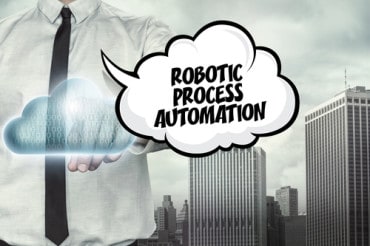
Is modern infrastructure up to the job for a real-time economy? Maybe. Two studies come to different results.
Businesses are anxious to move forward in today’s emerging real-time economy, but is their infrastructure ready to support its demanding requirements? Two new studies show a mixed picture or readiness.
In terms of resiliency and uptime, the picture is looking more positive, a study of 832 data centers out of the Uptime Institute suggests. “Overall, the picture that has emerged is one of gradual reductions in the frequency and severity of outages in data centers,” the study’s authors report. More than half (55%) of operators say they have had an outage at their site in the past three years. “This continues a trend of steady improvement.”
Still, another study of 1,288 executives out of Hitachi Vantara reveals a great deal of hesitancy about the ability of existing data infrastructure to manage upcoming workload. A majority, 76%, say their current infrastructures are not ready to meet upcoming demands – such as artificial intelligence.
AI’s full impact likely has yet to be felt. The Uptime Institute report states that “so far, the impact of AI on data center operations has been limited to the dynamic optimization of power and cooling, anomaly detection, predictive maintenance and other types of predictive analytics.” It’s too early in AI development to get a clear picture of the impact on data centers, the report adds.
See also: AI Workloads Need Purpose-built Infrastructure
There is even optimism that AI will reduce staffing burdens – currently one of the greatest challenges faced by data center operators. Nearly three-quarters of respondents to the Uptime Institute survey believe that “AI-based software tools will eventually reduce data center operations staffing levels – a viewpoint that Uptime has observed consistently for the past five years.” However, such a decrease has not been observed.
“The perception of AI’s looming power and influence has not reflected reality, however.” In its 2019 study, Uptime found 29% of respondents believed AI would reduce the need for human data center staff in the next five years. Nearly five years later, there is little evidence of this occurring.” AI in data center facilities “will be adopted cautiously,” the researchers predict. “Operators are distrustful of its ability to make reliable operational decisions.”
Uptime data also shows that data center owners/operators have been investing in resiliency, adding more redundancy. In spite of this, outages remain an issue, the survey’s authors caution. “Tracking outages in data center infrastructure, which includes the IT and networks, is saddled with complexities. What constitutes an outage, how severe it is, and what is understood as a root cause have all become less clear in the highly interconnected world of IT services.”
See also: The Cloud Journey: Implementing a Hybrid IT Infrastructure
In addition, many outages and their root-cause analyses remain hidden from public view; nondisclosure is still the first instinct of many operators, the Uptime authors state. “Unfortunately, this environment means outage data is inevitably ambiguous and incomplete, which prevents the industry from learning potentially useful lessons on how to avoid or contain similar incidents.”
Overall, however, “the picture that has emerged is one of gradual reductions in the frequency and severity of outages in data centers. In this year’s survey, 55% of operators say they had had an outage in the past three years, which is down from 60% in 2022, 69% in 2021 and 78% in 2020, and extends the gradual downward trajectory. Some of the improvement may be attributable to more detailed data collection in this year’s survey, the researchers add. There may also be ripples from the Covid-19 disruption shaping data center performance patterns.
The rising volumes of data and workloads moving through data centers also pose challenges to data center performance. The Hitachi survey estimates that by 2025, large organizations will be storing more than 65 petabytes of data – and at least half of this will be “dark data,” meaning there is no clear visibility as to where it is being stored and used.
Cloud, of course, will play a greater role in helping to alleviate infrastructure demands. The share of workloads placed in corporate, on-premises facilities has fallen below half, both the Uptime and Hitachi surveys show. This is “expected to shrink further as more organizations opt for a hybrid approach to IT,” the Uptime authors state.





























